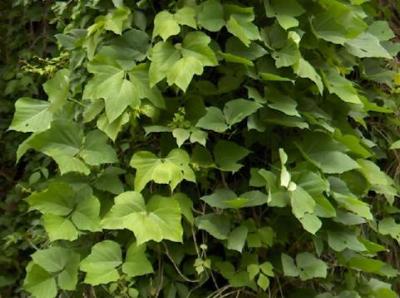

































 The three parts of the kudzu plant that are edible are the:
The three parts of the kudzu plant that are edible are the:| 4 quarts well water | 6 quarts fresh kudzu blossoms | yeast |
| 4 cups sugar | 1 gallon jug | 1 balloon |
| Category | Amount | % RDV |
| Calories | 258 | 12 % |
| Total Fat | 0.1 g | 0.2 % |
| Dietary Fiber | 10.3 g | 45.7 % |
| Protein | 2.1 g | 4.8 % |
| Calcium | 34.3 mg | 3.4 % |
| Phosphorous | 41.1 mg | 4.3 % |
| Iron | 1.4 mg | 7 % |

